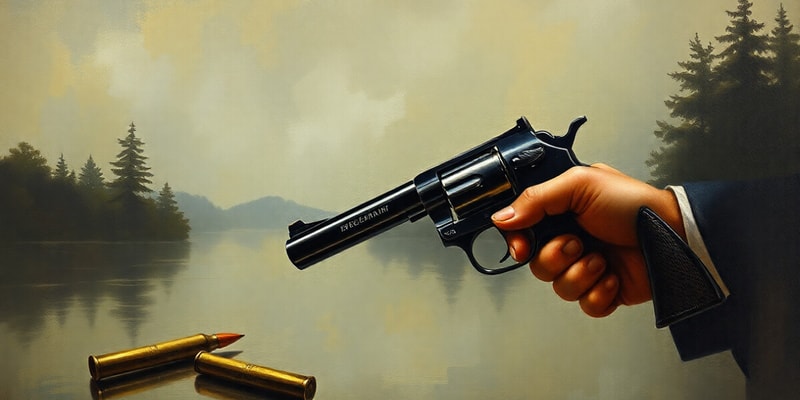Podcast
Questions and Answers
Who was the first to record a case of bullet identification?
Who was the first to record a case of bullet identification?
Dr. A.L. Hall
What year was the US Infantry case that involved identification of weapons during riots in Brownsville?
What year was the US Infantry case that involved identification of weapons during riots in Brownsville?
1907
What type of photographs did Victor Balthazard take in 1912 to identify weapons?
What type of photographs did Victor Balthazard take in 1912 to identify weapons?
Photomicrographs
All bullets fired through the same weapon bear identical markings.
All bullets fired through the same weapon bear identical markings.
Signup and view all the answers
Which of the following is a method used for firearm identification?
Which of the following is a method used for firearm identification?
Signup and view all the answers
What unique features did Balthazard identify on cartridge cases?
What unique features did Balthazard identify on cartridge cases?
Signup and view all the answers
What journal published the paper discussing firing pin impressions in 1923?
What journal published the paper discussing firing pin impressions in 1923?
Signup and view all the answers
Study Notes
Origins of Forensic Firearms Identification
- The beginnings of forensic firearms identification are unclear; it is unknown how or when unique grooves in fired bullets were first identified.
- Observations showed that bullets from the same weapon had consistent impressed grooves, unique to that firearm.
- Dr. A.L. Hall's article in the Buffalo Medical Journal in June 1900 represents the first recorded case of bullet identification, noting varied rifling marks among different weapon types.
The First Steps: US Infantry Case
- In 1907, during the Brownsville riots, an identification case emerged involving cartridge cases examined by staff at Frankfort Arsenal.
- Magnified photographs of firing pin impressions were utilized, leading to the identification of 39 cartridge cases linked to four weapons, though six remained unidentifiable.
- Bullets recovered lacked distinctive markings but aligned with rifling characteristics of Krag or Springfield rifles.
Photomicrographs and Advancements
- Victor Balthazard made significant contributions in 1912 by taking photomicrographs of bullet lands and grooves for weapon identification.
- He discovered that rifle markings on bullets were unique due to variations caused during the rifling process, allowing definitive identification of a bullet's firearm source.
- Balthazard's findings established the foundation of modern bullet identification science.
Balthazard's Work and Methods
- Balthazard expanded the scope of identification to cartridge cases, noting unique markings from the firing pin, breech face, extractor, and ejector.
- Each tool used in firearm construction leaves distinctive striations, crucial for identifying the weapon.
- His methods demanded precise photomicrographs, requiring consistent lighting and magnification for accurate comparison.
Research Contributions
- A 1923 paper in Annales de Medicine Legale by De Rechter and Mage advanced the understanding of firing pin impressions for weapon identification.
Studying That Suits You
Use AI to generate personalized quizzes and flashcards to suit your learning preferences.
Description
Explore the historical roots and evolution of forensic firearms identification, from the inconsistent beginnings to documented cases in the early 1900s. This quiz delves into the significant milestones, including Dr. A.L. Hall's contributions and key identification cases involving US infantry. Test your knowledge on the development of this crucial forensic technique.




